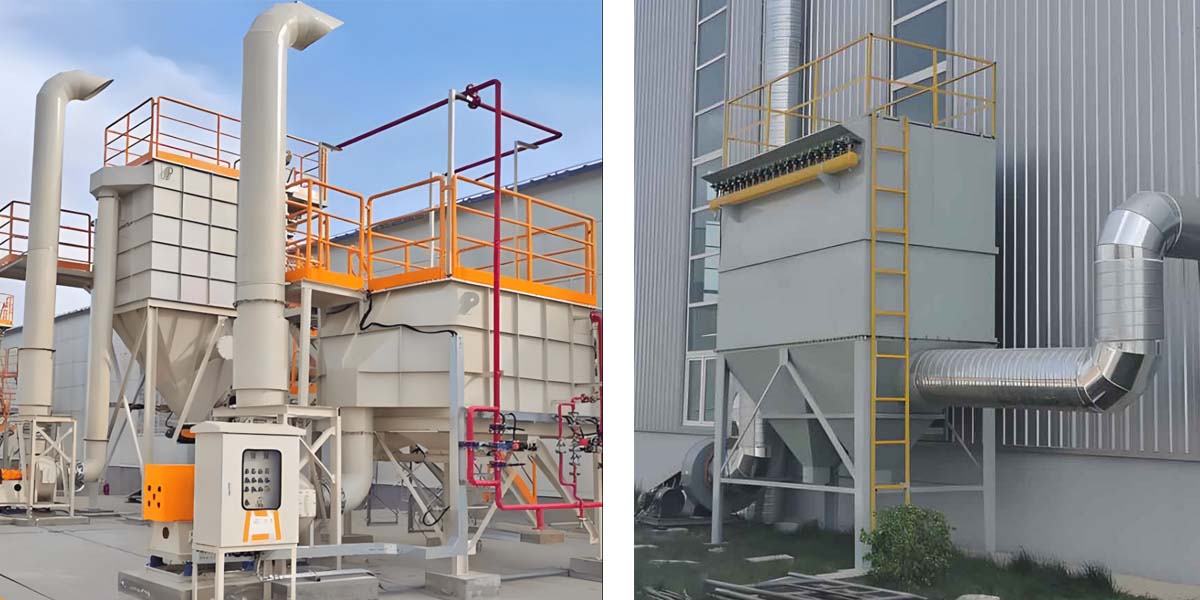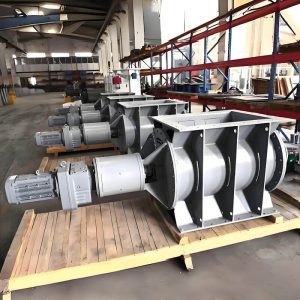When selecting a pulse bag dust collector, you need to consider multiple factors. This ensures the chosen equipment meets actual production needs and achieves efficient, stable, and economical operation. Here are some key selection steps and important notes:
1. Clarify Working Conditions
1.1 Handling Airflow
Determine the airflow that the dust collector needs to handle. This is the foundation for selection. Airflow directly impacts the specifications and performance of the dust collector. Consider the size of the hood, the distance from the dust emission point, and the filtering wind speed to accurately estimate the required airflow.
1.2 Dust Characteristics
Understand the characteristics of the dust, such as particle size, concentration, temperature, humidity, and viscosity. Choose suitable filter materials based on the dust properties, such as polyester, aramid, or fiberglass. For high temperature, high humidity, or highly corrosive dust, select materials that are heat-resistant and corrosion-resistant.
2. Determine Dust Removal Efficiency and Emission Standards
2.1 Dust Removal Efficiency
Select a dust collector model that can meet the required efficiency for production. Pulse bag dust collectors typically achieve over 99% efficiency, but this depends on dust characteristics and equipment configuration.
2.2 Emission Standards
Clarify the emission standards for the dust collector to ensure compliance with national or local environmental regulations. Set efficiency goals based on these standards and select the appropriate filtering efficiency level.
3. Consider Cleaning Methods and Filter Area
3.1 Cleaning Method
Pulse jet cleaning is the most common method for pulse bag dust collectors. Compressed air is injected into the filter bag through a pulse valve for cleaning. Ensure the reliability of the cleaning system and set a reasonable cleaning cycle for maintenance convenience.
3.2 Filter Area
Calculate the required filter area based on the handling airflow and filtering wind speed. The size of the filter area directly affects the dust collector's efficiency and investment costs.

4. Equipment Layout and Installation
4.1 Installation Location
Determine the installation location and space size for the dust collector based on the layout of the production workshop and equipment placement. Consider the inlet and outlet positions and duct layout to minimize airflow resistance and leakage.
4.2 Duct Layout
Design the inlet and outlet positions and duct layout to ensure smooth airflow. If necessary, set up air valves and adjustment devices to control airflow distribution and volume.
5. Economic Evaluation
5.1 Cost-Effectiveness
Evaluate the costs of the dust collector, including equipment, installation, operation, and maintenance. Choose a dust collector with high cost-effectiveness to reduce investment costs. Also, assess energy consumption and filter replacement cycles to ensure long-term economic operation.
5.2 Energy-Saving Measures
Consider implementing energy-saving measures and efficient cleaning systems to lower operating costs.
6. Other Considerations
6.1 Safety Measures
For operations involving toxic or explosive materials, select a dust collector with appropriate safety features. Ensure that the dust collector meets relevant standards for explosion-proof and toxic prevention measures.
6.2 Maintenance Convenience
Choose a dust collector that is easy to maintain to reduce maintenance costs and improve equipment reliability. Consider the convenience of bolsa de filtro replacement and cleaning system maintenance.
Conclusión
In summary, selecting a pulse bag dust collector is a comprehensive process. You must consider working conditions, dust removal efficiency, cleaning methods, equipment layout and installation, economic evaluation, and other important factors. A well-structured selection process can ensure that the dust collector operates efficiently, stably, and economically in practical applications. Choosing the right pulse bag dust collector can enhance production efficiency and effectively protect the environment.For more information or assistance, please feel free to Contacto. We look forward to providing you with professional solutions!





